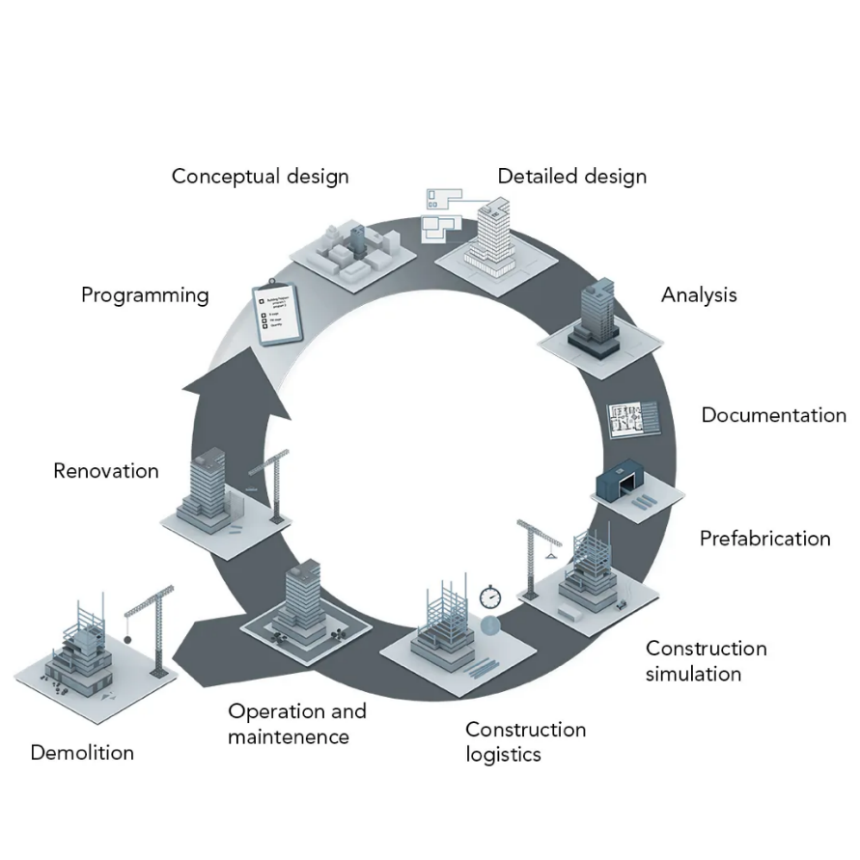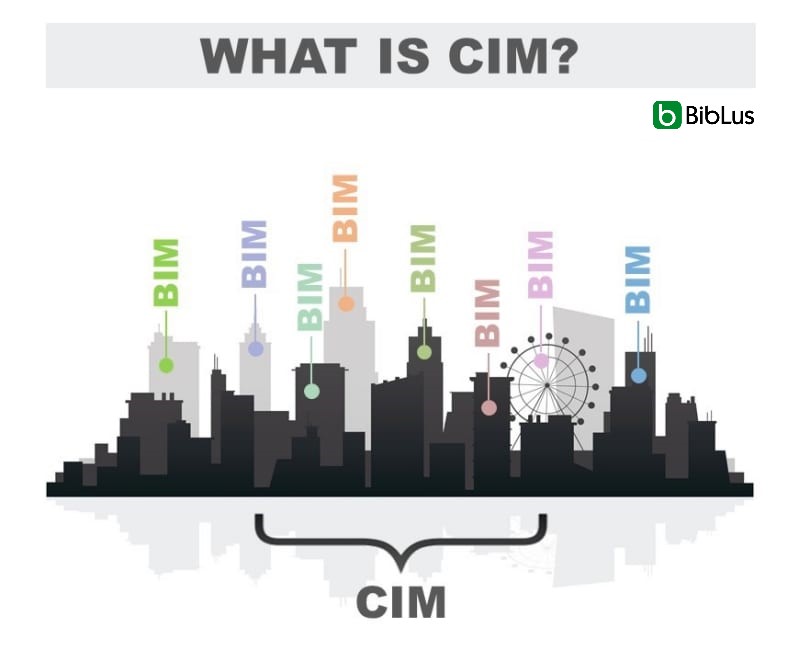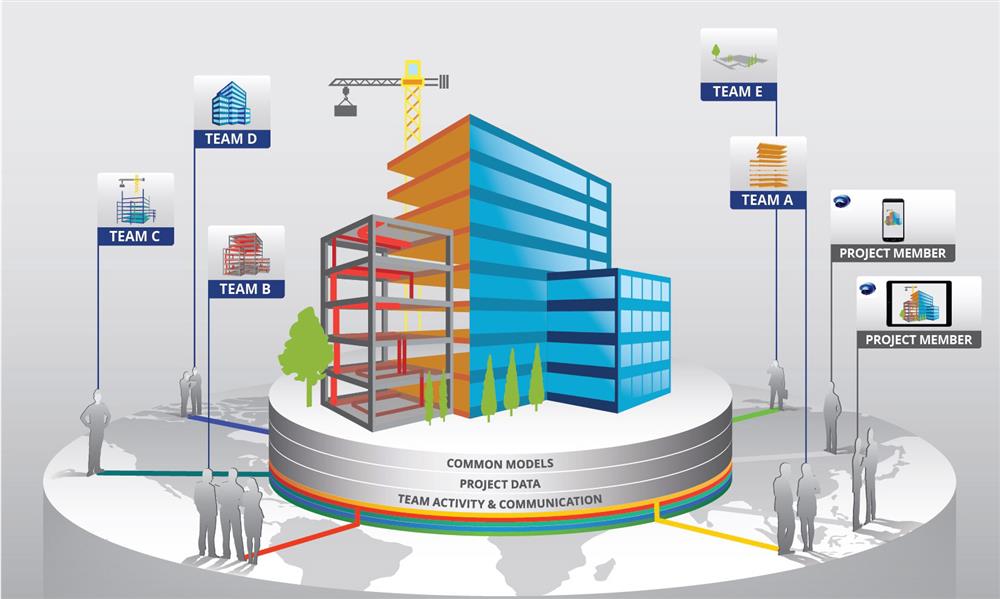Building Information Model (BIM) and Civil Information Model (CIM) are digital tools transforming the construction industry. BIM is a set of technologies, processes, and policies of creating and managing digital representations of a building or structure, while CIM is focused on civil infrastructure facilities and sometimes called infraBIM. These tools enable stakeholders to design, construct and operate projects in city environment more efficiently.
These tools help to manage life cycle of various projects effectively. The approach with BIM and CIM provides a comprehensive understanding to architects, engineers, and contractors to collaborate efficiently, reduce errors, and streamline construction process (Kumar, 2016 and Chang et al., 2016). Moreover, digitalisation enables repositories for data storage and analysis, for example to provide insights for project management, risk mitigation, and decision-making.

Life cycle for BIM (Source: Buildext).

Connection of BIM and CIM in city (Source: Accasoftware).
The use of BIM and CIM is currently becoming increasingly popular in many countries. They offer numerous benefits, including increased efficiency and productivity, reduced waste, improved communication and collaboration, enhanced safety, and more accurate cost estimating and scheduling. For construction industry, these technologies offer opportunities to develop built environments that have reduced environmental impacts. By this way cities may be built and managed from buildings to roads, bridges, and other infrastructures that are more sustainable and resilient.

Modeling benefits in city (Source: Geospatialworld)
Comments ()